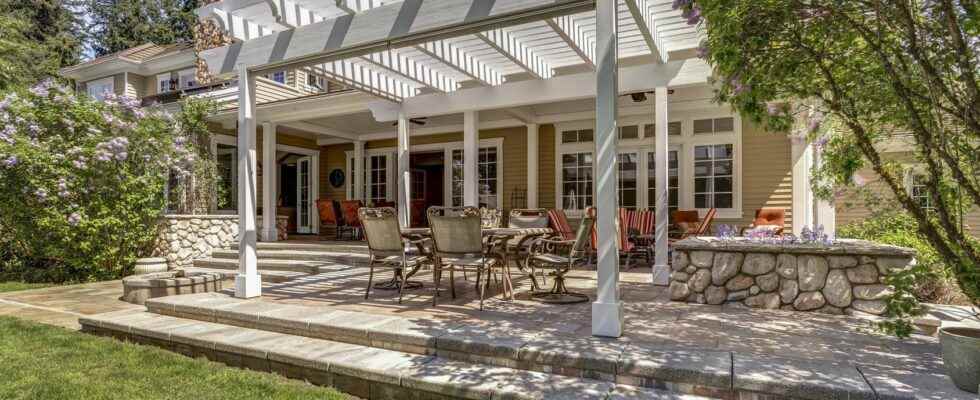Most recent constructions perform rather poorly the function of cooling the house in summer: we now tend to rely on air conditioners. However, respecting a few simple principles would make it possible to eliminate this considerable and useless energy expenditure in our climates.
You have to start by choosing the location of the home taking into account the direction of winds dominant — to facilitate the ventilation natural — and relief. The location of the bay windows is also essential: the largest should face south because the summer sunshine is greater on the south-east and west/south-west orientations. At midday, the Sun is very high in the sky and is easily stopped in a south orientation by the shading of an overhang of roof, a shading or a balcony. On the other hand, beware of roof windows which are terrible traps for calories.
Sun protection
Also think about all the other forms of sun protection: shadetrees leafy lapsed (which let the sun pass throughwinter), pergolasgreen roofs and facades, floor coverings walls or roof of color clear with strong reflective power, shutters… Particular attention should be paid to windows located to the west, which generate the most overheating.
Not all insulation is created equal
Even in a recent, well-insulated house, conventional insulators are not very effective against overheating. Firstly because in France, we have taken the bad habit of insulating the walls from the inside, whereas insulation from the outside makes it possible to take advantage of theinertia walls. Then because the most common insulators (polystyrene, glass or rock wool), quite effective in protecting us from the cold, are much less effective against heat. This is due to a little-known characteristic: the accumulation capacity, which measures the ability of the material to attenuate extreme temperature differences according to the day/night rhythm. The best results are obtained with fiberglass insulation panels. wood then by cellulose wadding and expanded cork.
To learn more about this subject, two books: I insulate my homeby Roland Dutrey and Ecological sound insulationby Jean-Louis Beaumier.
living earth has specialized for 30 years in ecological housing.
Interested in what you just read?
